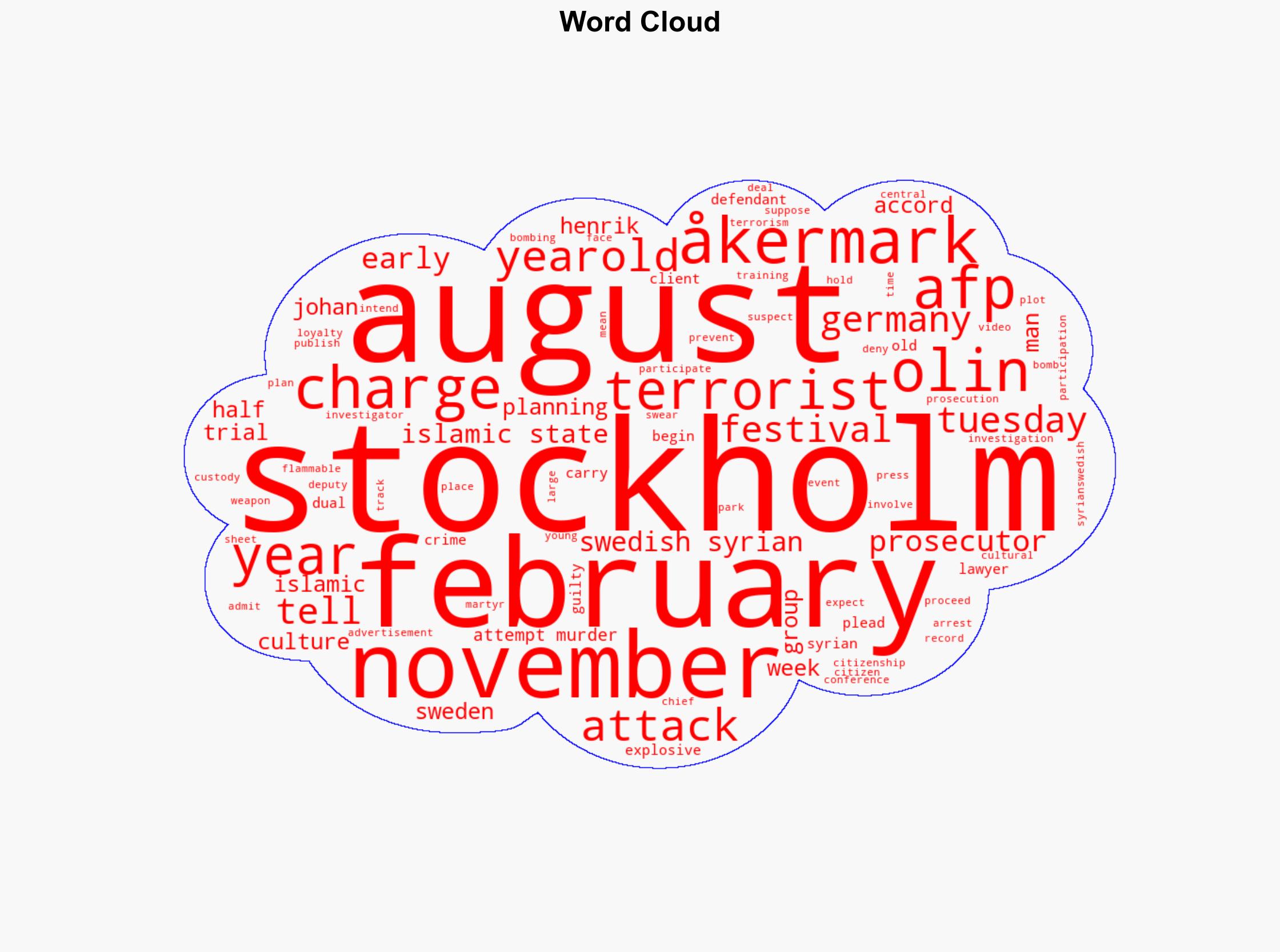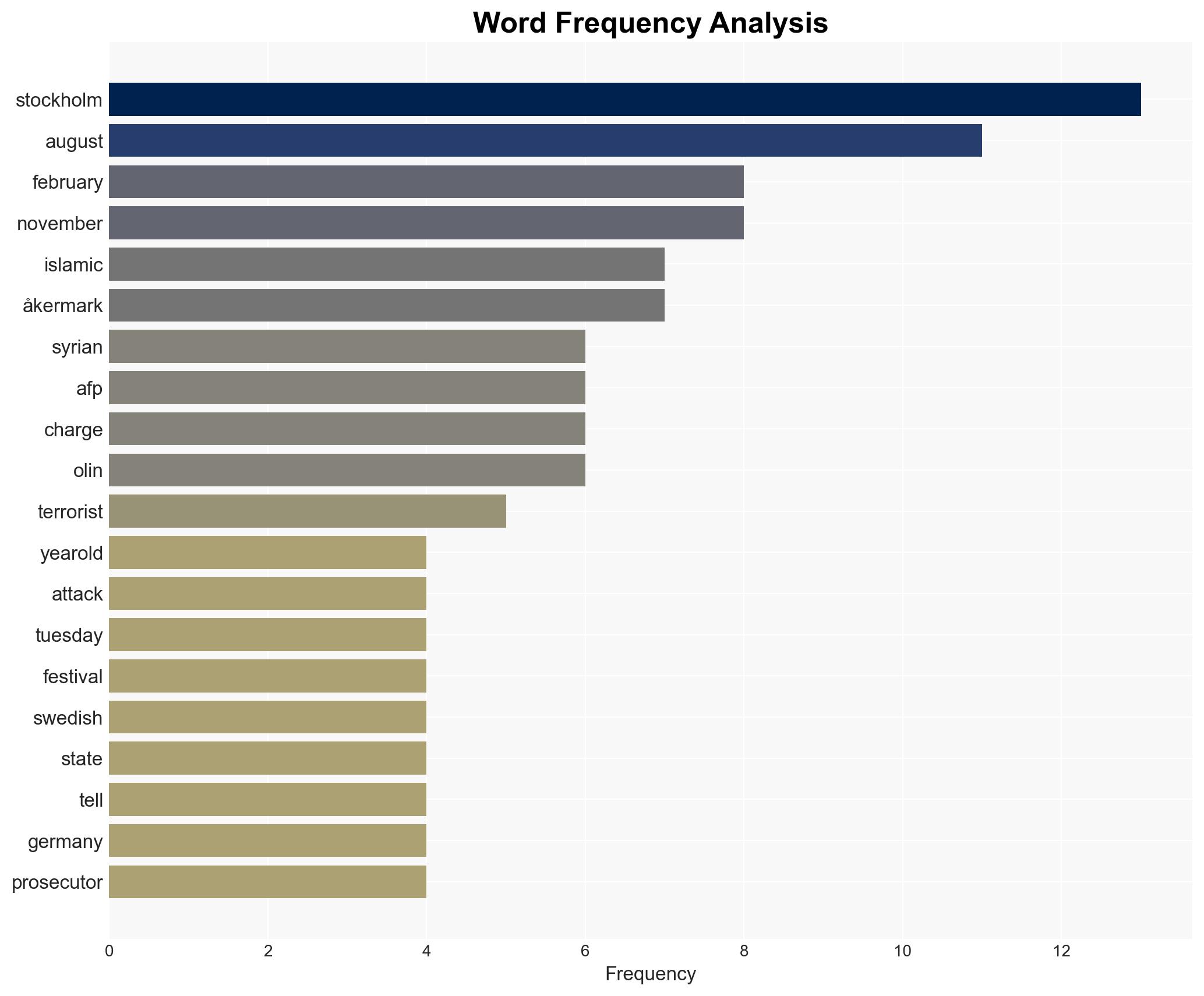Syrian-Swedish man admits planned attack against Stockholm festival – The Local Sweden
Published on: 2025-11-19
AI-powered OSINT brief from verified open sources. Automated NLP signal extraction with human verification. See our Methodology and Why WorldWideWatchers.
Intelligence Report:
1. BLUF (Bottom Line Up Front)
With a moderate confidence level, the most supported hypothesis is that the Syrian-Swedish man’s planned attack was primarily motivated by allegiance to the Islamic State (IS) and intended to cause mass casualties at a high-profile cultural event in Stockholm. Recommended actions include enhancing counter-terrorism measures at public events and strengthening intelligence-sharing mechanisms with international partners to prevent future threats.
2. Competing Hypotheses
Hypothesis 1: The primary motivation for the planned attack was ideological, driven by the individual’s loyalty to the Islamic State, aiming to execute a high-impact terrorist event to gain attention and support for IS.
Hypothesis 2: The planned attack was primarily opportunistic, with the individual seeking personal notoriety or revenge, using IS affiliation as a cover to legitimize the attack.
Hypothesis 1 is more likely given the defendant’s admission of loyalty to IS, the preparation of a martyr video, and the target being a large cultural festival, which aligns with IS’s strategic objectives of high-profile attacks.
3. Key Assumptions and Red Flags
Assumptions: It is assumed that the defendant’s confession is truthful and that the planned attack was indeed linked to IS. The effectiveness of Swedish intelligence in preventing the attack is also assumed to be high.
Red Flags: The defendant’s denial of the attempted murder charge in Germany raises questions about the consistency of his statements. The possibility of other accomplices or undetected plots remains a concern.
Deception Indicators: The timing of the confession and the plea deal could suggest strategic legal maneuvering rather than full transparency.
4. Implications and Strategic Risks
The planned attack highlights the persistent threat of IS-inspired terrorism in Europe, particularly targeting high-profile public events. This could lead to increased security measures, impacting public perception and attendance at cultural events. There is also a risk of retaliatory or copycat attacks, potentially escalating into broader security challenges.
5. Recommendations and Outlook
- Enhance security protocols and intelligence operations at large public gatherings to mitigate the risk of future attacks.
- Strengthen international collaboration and intelligence-sharing to identify and disrupt transnational terrorist networks.
- Best-case scenario: Successful prevention of further attacks through improved intelligence and security measures.
- Worst-case scenario: Failure to detect and prevent additional attacks, leading to significant casualties and heightened public fear.
- Most-likely scenario: Continued attempts at terrorist activities with varying degrees of success, necessitating ongoing vigilance and adaptation of counter-terrorism strategies.
6. Key Individuals and Entities
Johan Åkermark: Lawyer for the defendant.
Henrik Olin: Deputy Chief Prosecutor involved in the case.
7. Thematic Tags
Structured Analytic Techniques Applied
- Cognitive Bias Stress Test: Expose and correct potential biases in assessments through red-teaming and structured challenge.
- Bayesian Scenario Modeling: Use probabilistic forecasting for conflict trajectories or escalation likelihood.
- Network Influence Mapping: Map relationships between state and non-state actors for impact estimation.
Explore more:
National Security Threats Briefs ·
Daily Summary ·
Support us





